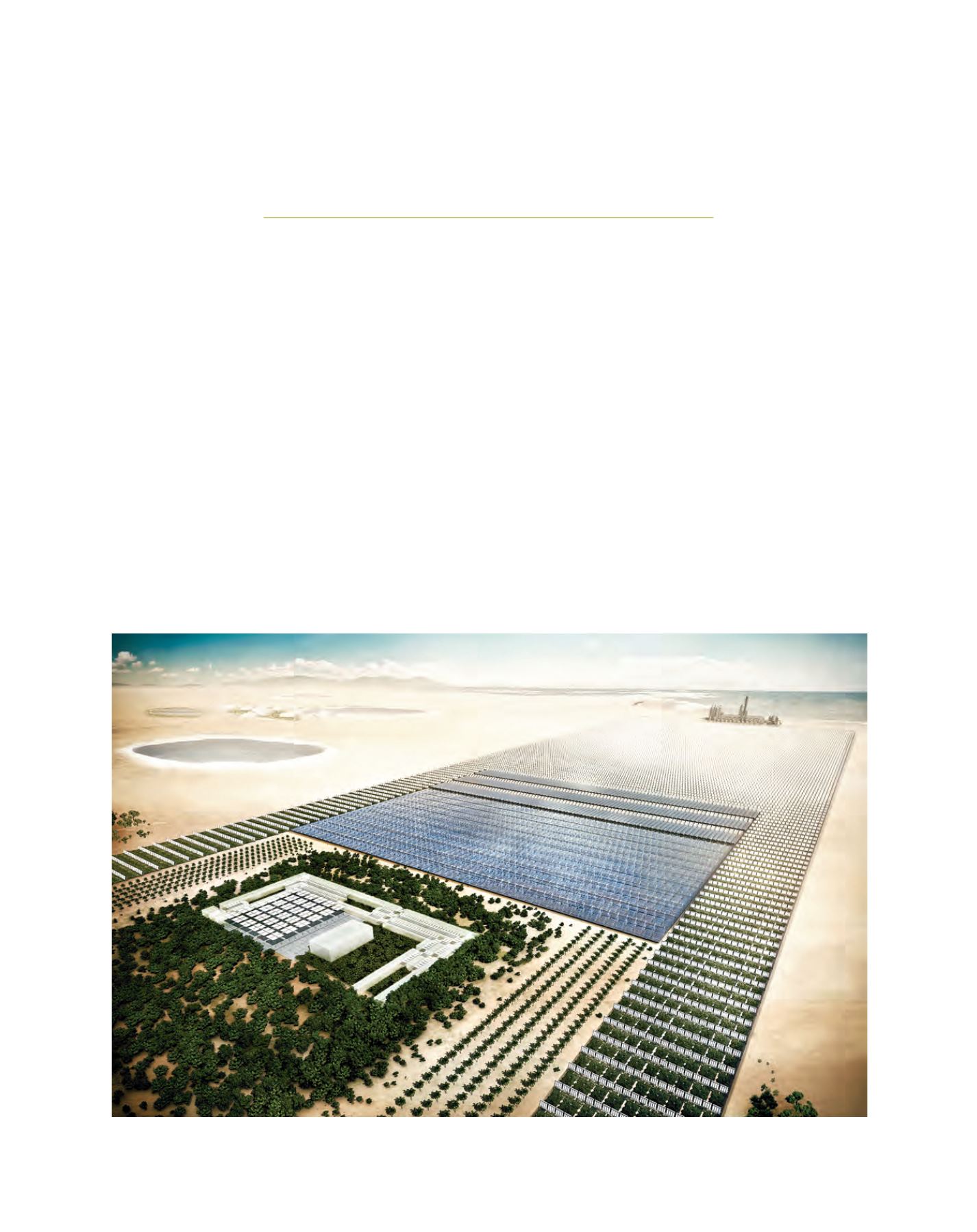

[
] 281
The Sahara Forest Project –
enabling restorative growth
Joakim Hauge, CEO, Sahara Forest Project
I
n 2050 about 9.3 billion people will be sharing the same
planet.
1
Already today the world is facing intertwined chal-
lenges associated with the processes leading to climate
change, desertification and shrinking forests, and of food, water
and energy security. None of these challenges are without solu-
tions, but it is becoming increasingly clear that we should not
be developing responses to one challenge that are detrimental to
another. When the greatest challenges of our time are so closely
interlinked, the same must be true for the solutions. To borrow
the words of Albert Einstein: “We can’t solve problems by using
the same kind of thinking we used when we created them.”
There are indications that the rate of deforestation has been somewhat
reduced in recent years.
2
However, despite regional differences the overall
rate still remains alarmingly high. While the world’s forests are shrink-
ing, the world’s deserts continue to grow. This global trend
causes serious negative impacts on future food, water and
energy security, as well as contributing to climate change.
Today, the livelihoods of more than one billion
people in some 100 countries are threatened by deser-
tification. It is estimated that desertification and land
degradation represent an income loss of US$42 billion
per year. Further, the barren lands lost annually could
have provided 20 million tons of grain.
3
Even though
desertification is most often directly triggered by local-
ized drought, human activities are almost always a key
underlying cause. It is therefore of major importance
to introduce sustainable cultivation and irrigation
practices, and to implement programmes to prevent
over-grazing and unsustainable outtake of biomass.
An artistic impression of what a Sahara Forest Project Test and Demonstration Centre might look like
Image: The Sahara Forest Project
















